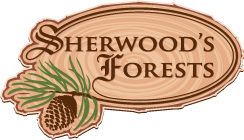Fertilizing
How much is too much?
Established trees
Fertilizing is easy to overdo. I now deal with my garden trees like this:
In the fall, after the leaves have turned colour, but before it freezes, everybody gets a dose of granular balanced fertilizer. I try to use ones with nitrogen in the form of urea rather than nitrates. It's slower release. Currently my go-to is UFA 20-10-10.
Each tree gets about a tablespoon per foot of height. This is spread in a band about half a radius wide under the drip line. (Eh? You lost me. OK. If the dripline averages 12 feet from the tree, spread the fertilizer in a 6 foot wide band (half a radius) from about 3 feet inside to 3 feet outside the dripline)
Let's walk through another. 16 foot apple tree with a 10 foot spread. 16 tablespoonfuls = 1 cup of 20-10-10. Half of 10 feet is 5 feet. So you try to spread you fert in a 5 foot wide band about at the drip line.
If I miss the fall, then I do it in the spring as soon as I can move through the snow. It's ok to put it on the snow.
In the early summer I give everyone about half of this same dose in mid-June. If I can I try to do this one just before a good rain.
Conifers need less fertilizer. Use 1/3 to 1/2 of the above.
Newly Planted trees
During the first year in their new home, I only use a high phosphorus fertilizer. That's a big middle number. This encourages roots to grow. It will mean that the top half of the tree pretty much sits there, but the tree needs to get it's roots spread out more. I sell 1/2 kg containers of this.
Liquid fertilizer.
Conifers can be watered with a 50 ppm N solution of 10-50-10 continuously until late July. (ppm = parts per million) Leaf trees can use double that. If it rains lots, though, you water less. All in all, I prefer pellets.
1 Kg of 10-50-10 in 1000 litres of water will be 100 ppm. But that's an inconvenient measure. It's 1 gram per liter of water. And a gram of fertilizer is darn close to a quarter teaspoon.
So a teaspoon per gallon is about right for leaf trees. Half that for needle trees. If it's raining lots, cut the water in half, but use the same amount of soluble fertilizer. The rain will make up the difference.
"But what if it's 20-10-10?" you cry. Double the concentration, double the water.
Complicating Factors
Fast draining soils need light fertilizer more often. Clay acts as a fertilizer sponge, holding ions on the surface of the microscopic plates. Clay also has particles that are so small that water doesn't move very fast.
A fast draining soil has lots of sand, rock, and chunky bits in it. The organic chunky bits are ok at holding fertilizer, but not great. So basically the tree gets one chance to grab the fertilizer on it's way by.
Because the clay will glom on to the fertilizer, overdoing it is harder on a clay soil than on a sandy soil. So a clay soil might well tolerate a dose of fertilizer at a tablespoon per gallon, without hurting the roots, especially if the soil was dry. On the other hand it might not.
Now you have me confused!
Don't be. It's easy.
First year: Every 3 weeks: 1/2 tsp per gallon of 10-50-10 for needle trees, 1 tsp per gallon for leaf trees until the first of August. That's at 1 gallon of solution per gallon of tree container. If you planted #2 pots, 2 gallons each time.
Add extra water if if it's hot and dry, but keep the same amount of fert. If you have to add water, do half the fert, water, then the other half. Or do a plain watering between the fert waterings.
Make a more concentrated solution if it's wet. The rain will dilute.
In the fall: 1 tablespoon of slow release balanced fertilizer per foot of height spread out at around a 4 square feet per tablespoon. (So a 4 foot tree gets 4 tablespoons spread out over a roughly 4x4 foot area around the trunk. A 12 foot tree gets 12 tbs spread out over 48 square feet -- roughly 7x7, but there aren't any feeders near the trunk, so move out to the dripline.
In the spring when the tree is in it's growth spurt, about half that.
If you are in doubt, under do it.
Got something to say? Email me: sfinfo@sherwoods-forests.com
Interesting? Share this page.
Want to talk right now? Call me: (8 am to 8 pm only, please) 1-780-848-2548
Do not arrive unannounced. Phone for an appointment. Why? See Contact & Hours That same page gives our hours of operation.
Back to Top
Copyright © 2008 - 2021 S. G. Botsford
Sherwood's Forests is located about 75 km southwest of Edmonton, Alberta. Please refer to the map on our Contact page for directions.
